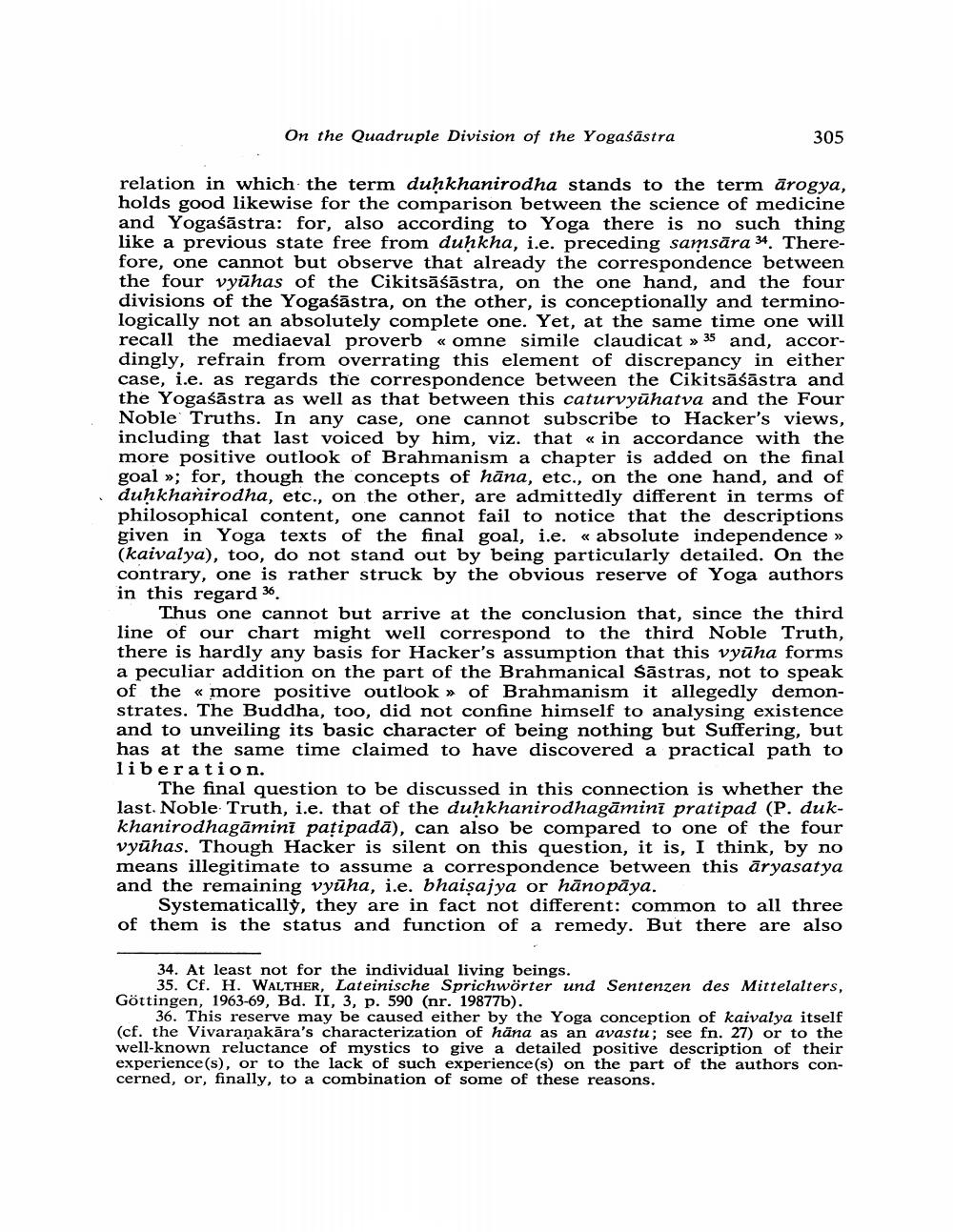________________
On the Quadruple Division of the Yogaśāstra
305
relation in which the term duḥkhanirodha stands to the term ārogya, holds good likewise for the comparison between the science of medicine and Yogaśāstra: for, also according to Yoga there is no such thing like a previous state free from duḥkha, i.e. preceding samsāra 34. Therefore, one cannot but observe that already the correspondence between the four vyūhas of the Cikitsāśāstra, on the one hand, and the four divisions of the Yogaśāstra, on the other, is conceptionally and terminologically not an absolutely complete one. Yet, at the same time one will recall the mediaeval proverb « omne simile claudicat » 35 and, accordingly, refrain from overrating this element of discrepancy in either case, i.e. as regards the correspondence between the Cikitsāśāstra and the Yogaśāstra as well as that between this caturvyūhatva and the Four Noble Truths. In any case, one cannot subscribe to Hacker's views, including that last voiced by him, viz. that « in accordance with the more positive outlook of Brahmanism a chapter is added on the final goal »; for, though the concepts of hāna, etc., on the one hand, and of duhkhanirodha, etc., on the other, are admittedly different in terms of philosophical content, one cannot fail to notice that the descriptions given in Yoga texts of the final goal, i.e. « absolute independence >> (kaivalya), too, do not stand out by being particularly detailed. On the contrary, one is rather struck by the obvious reserve of Yoga authors in this regard 36.
Thus one cannot but arrive at the conclusion that, since the third line of our chart might well correspond to the third Noble Truth, there is hardly any basis for Hacker's assumption that this vyūha forms a peculiar addition on the part of the Brahmanical Sastras, not to speak of the « more positive outlook » of Brahmanism it allegedly demonstrates. The Buddha, too, did not confine himself to analysing existence and to unveiling its basic character of being nothing but Suffering, but has at the same time claimed to have discovered a practical path to liberation.
The final question to be discussed in this connection is whether the last. Noble Truth, i.e. that of the dunkhanirodhagāmini pratipad (P. dukkhanirodhagāmini patipadā), can also be compared to one of the four vyūhas. Though Hacker is silent on this question, it is, I think, by no means illegitimate to assume a correspondence between this āryasatya and the remaining vyūha, i.e. bhaisajya or hānopāya.
Systematically, they are in fact not different: common to all three of them is the status and function of a remedy. But there are also
34. At least not for the individual living beings.
35. Cf. H. WALTHER, Lateinische Sprichwörter und Sentenzen des Mittelalters, Göttingen, 1963-69, Bd. II, 3, p. 590 (nr. 19877b).
36. This reserve may be caused either by the Yoga conception of kaivalya itself (cf. the Vivaranakāra's characterization of hāna as an avastu; see fn. 27) or to the well-known reluctance of mystics to give a detailed positive description of their experience(s), or to the lack of such experience(s) on the part of the authors concerned, or, finally, to a combination of some of these reasons.




